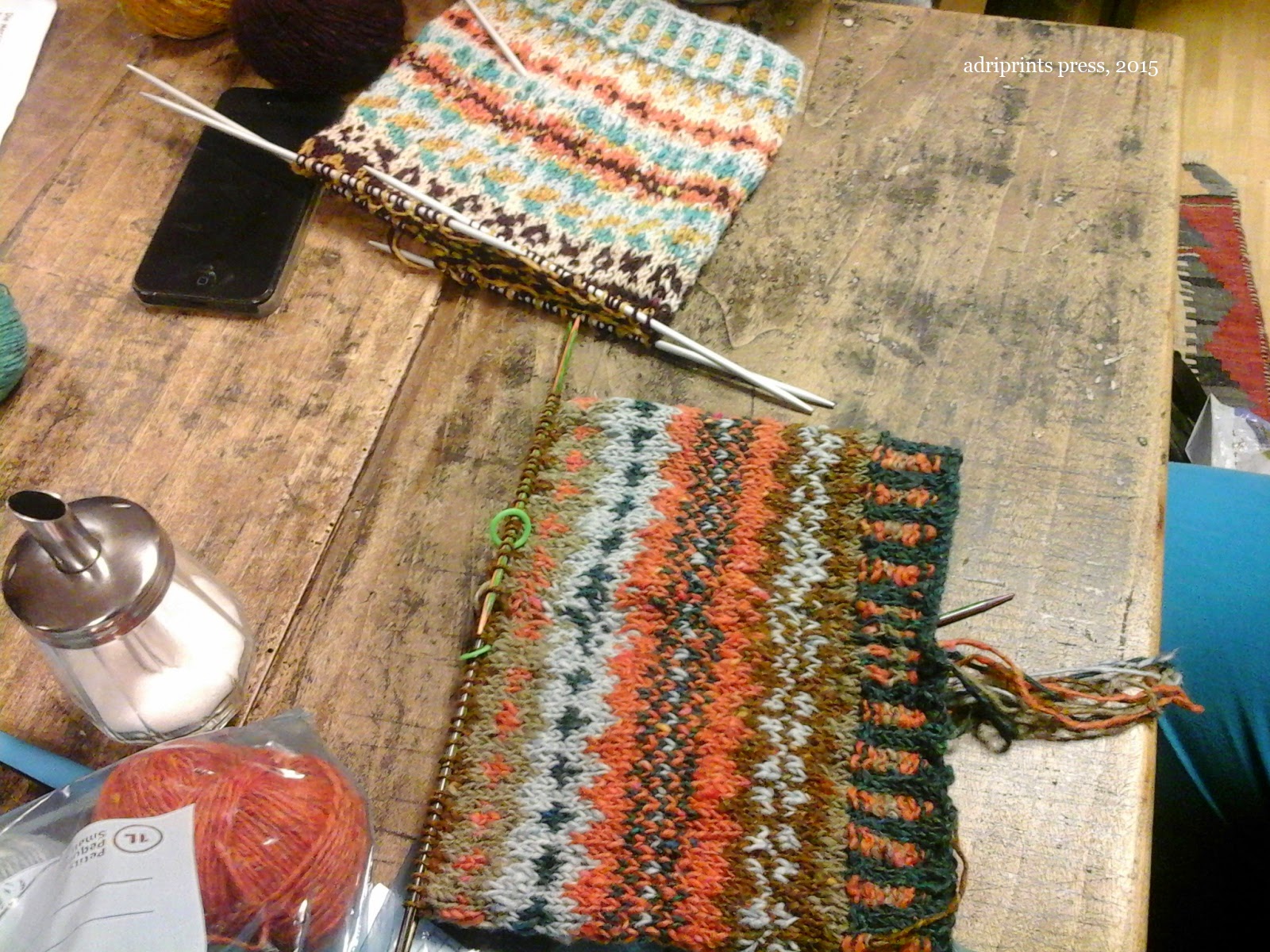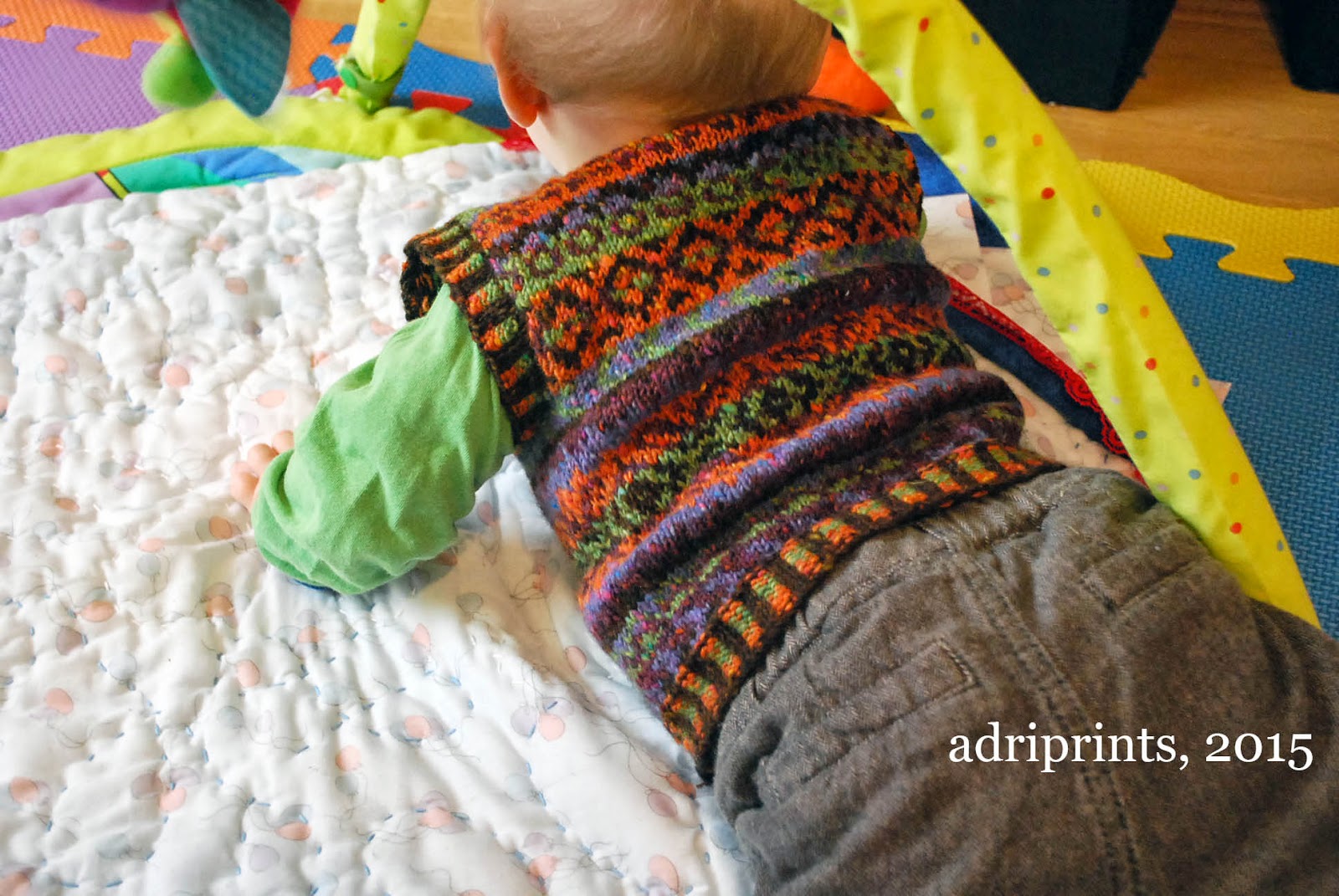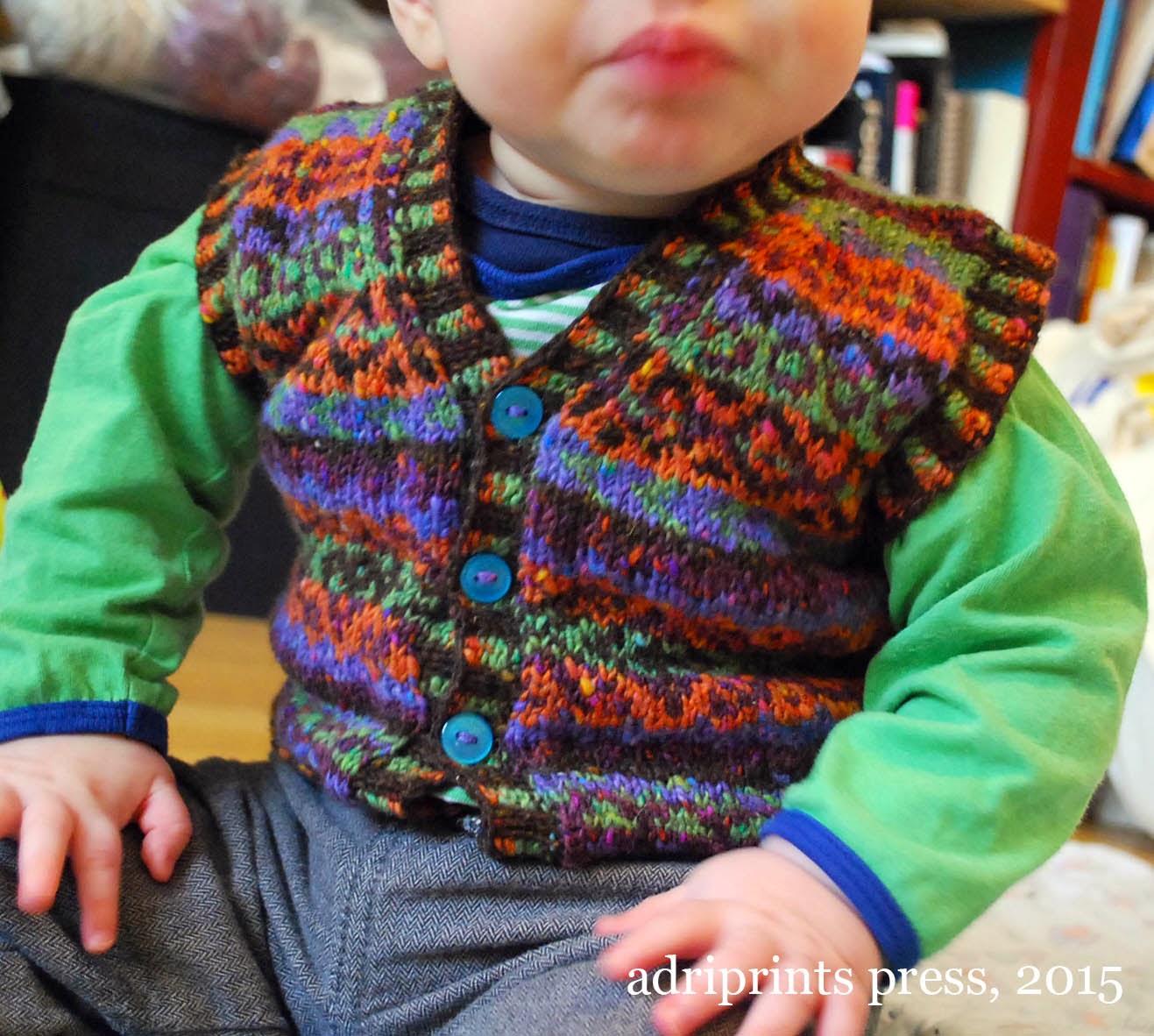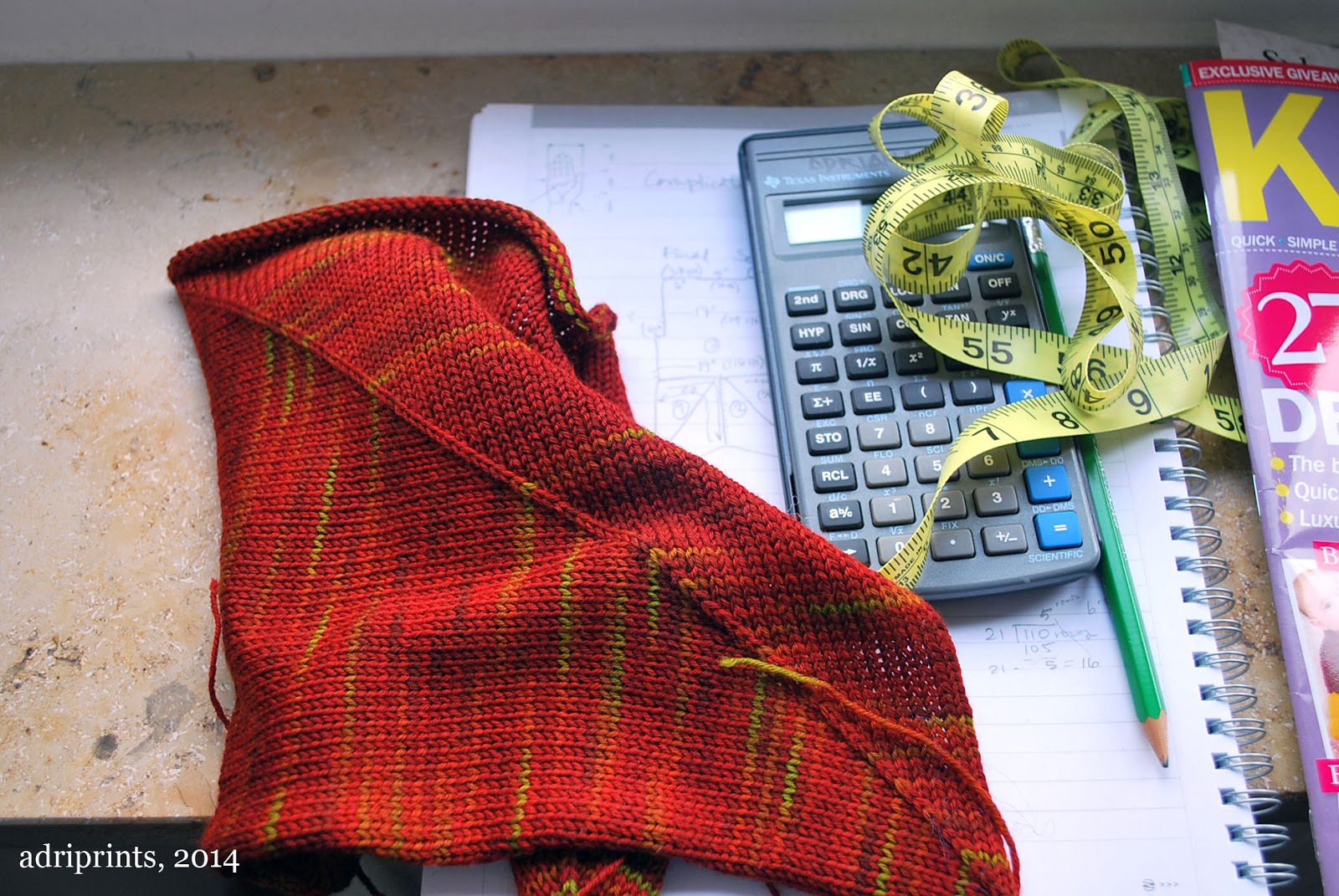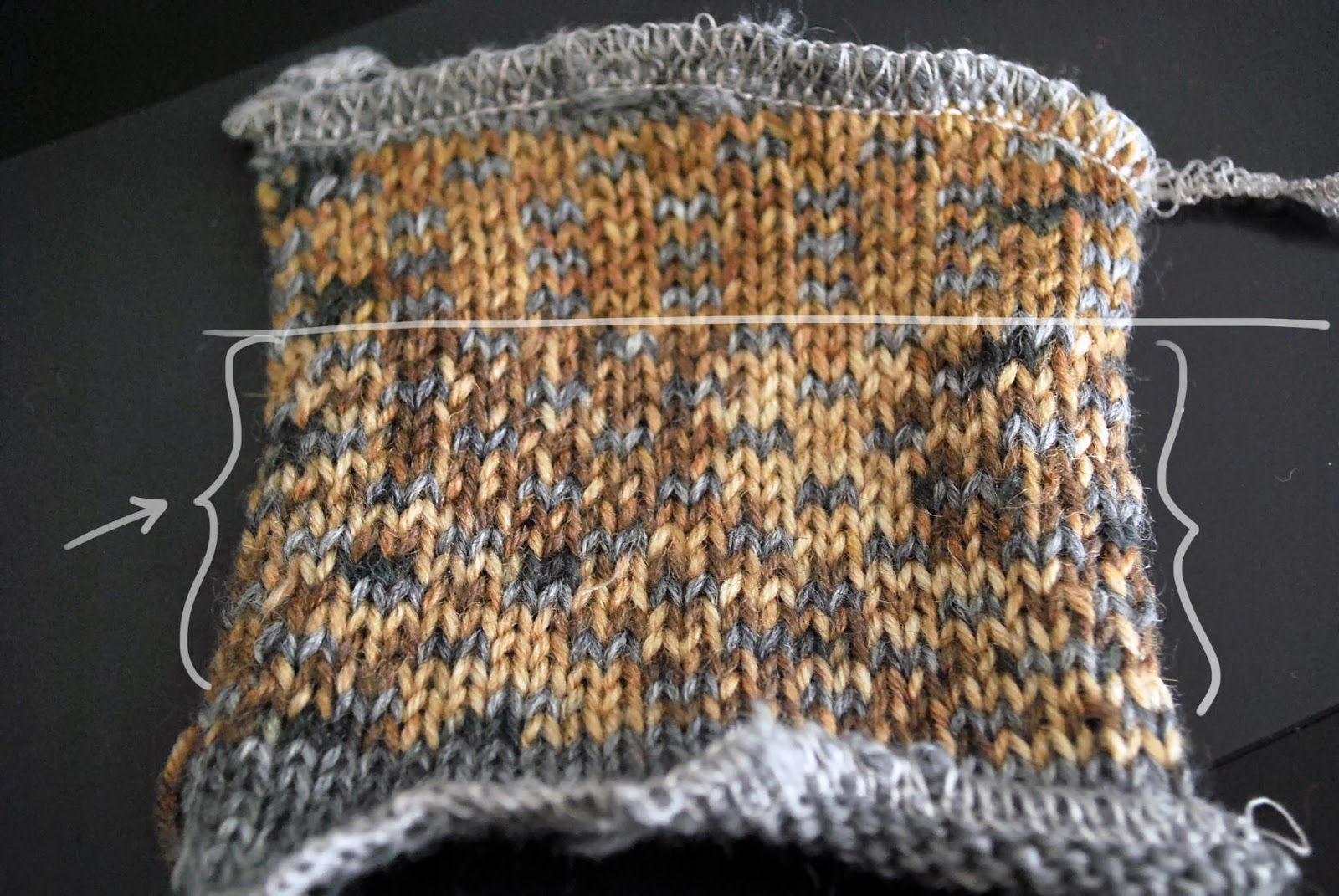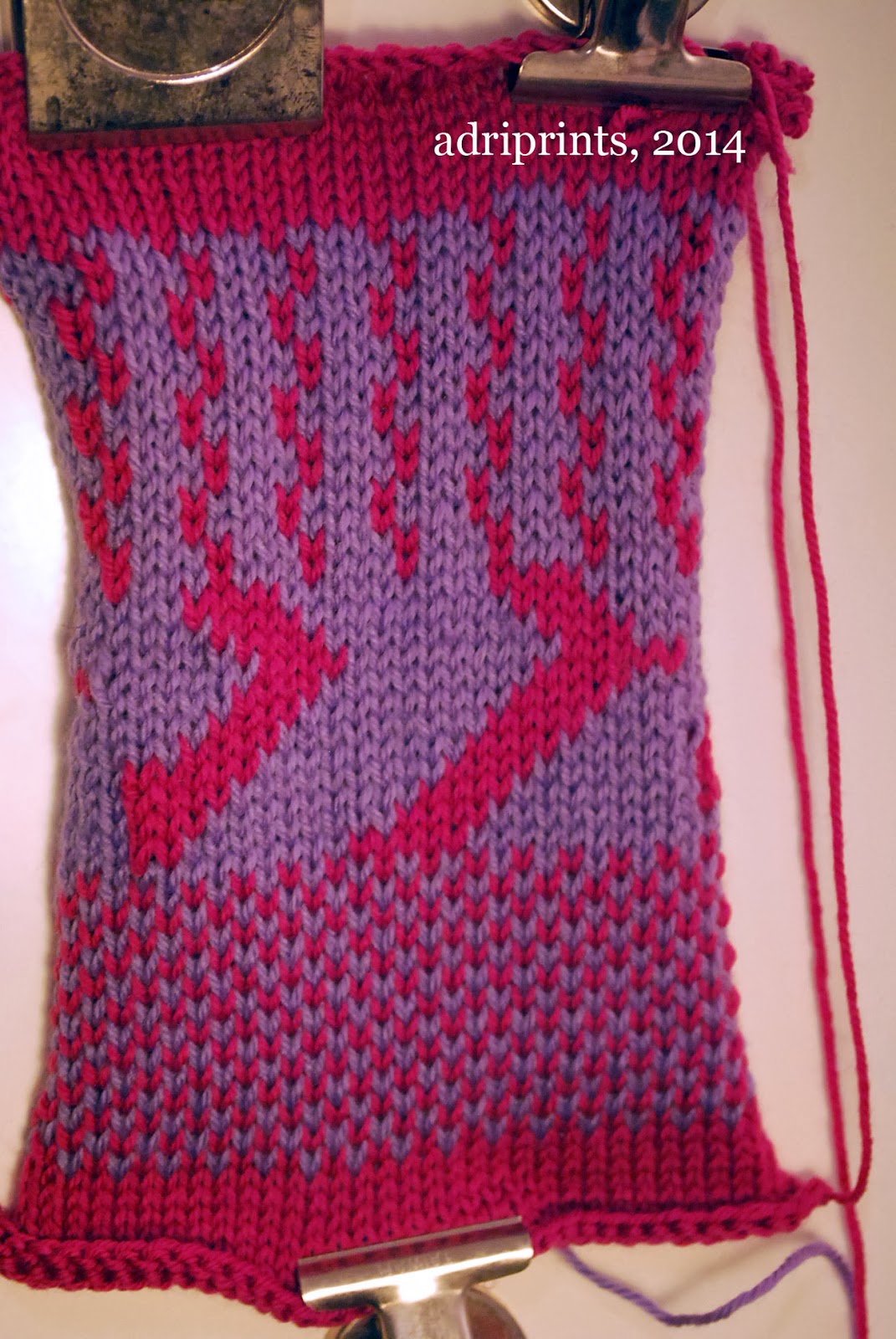I am a huge fan of fairisle knitting by hand. I teach a course every once in a while to people who want to learn the technique, and I enjoy spreading the love of fairisle wherever I go. It's one of those techniques that looks way harder than it actually is. And, very recently (last week), I started to experiment with the technique on my knitting machine using the punchcards. At first, I was stymied by some technical issues with the patterning.
See what I mean?
Weird! Why is it only knitting in pattern every other row?!
It was time for some detective work, and I consulted the amazingly generous and talented members of Ravelry's Machine Knitting Group. Seriously, they are so knowledgeable. First, I checked the lever settings as was recommended. No luck. Then, someone chimed in with a similar knitting machine, and said it could be an un-sprung spring in the undercarriage of the knitting machine.
If you notice, every knitting machine has a carriage that slides across the bed of the machine and it's got tons of tiny cams, gears, levers, springs, etc. underneath that carriage. I turned mine over and started by looking to see if changing the different modes (tuck stitch, stockinette, fairisle, etc.) made any of those levers move. They usually move symmetrically, but low and behold, mine did not!
Instead, I found wads of cat hair, fluffy junk, and some sticky, gummy springs. But, luckily, I didn't have to reattach a spring. Those springs are tiny. They were all intact, just gummy. So out came the latex gloves, rags, and machine oil... Fast forward fifty cotton swabs, tweezers, and a dirty rag later...
BAM! ZIP!
Success!
Thanks for your help, Ravelry Machine Knitting Mods!! The Empisal Knitmaster 324's knitting smoother than ever.
I still prefer hand-knit fairisle for more complex patterning, and I especially dislike long floats like in that center pattern. Yuck! But now I know how use the punchcards on my knitting machine, and that's a start!


